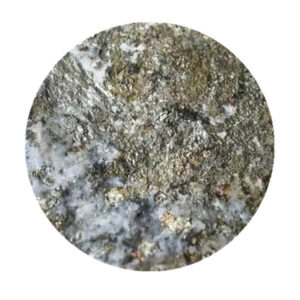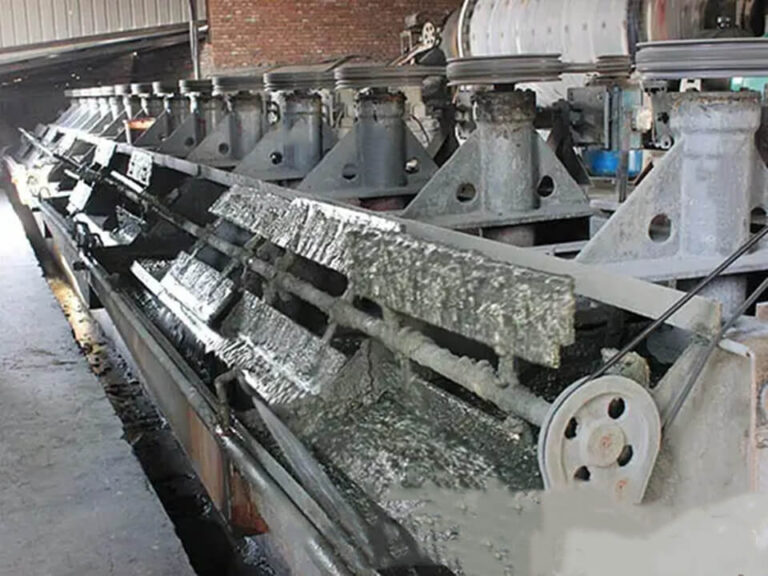
As a common precious metal, there are many kinds of gold ores. Among the types of gold ore, the gold ore that is more difficult to select is the fine-grained gold ore. Usually, Fine-grained gold ore has the characteristics of fine embedded particle size and usually contains a variety of complex components that hinder the separation of gold ore. Such as fine-grained gold ore containing arsenic, sulfur, and carbon. When separating these gold ores, it is often difficult to achieve the ideal separation effect using simple beneficiation methods. Below we will discuss the separation methods of these three types of gold mines respectively.
Carbon-containing Fine-grained Gold Ore
Usually, the carbonaceous material in gold ore will adsorb cyanide during cyanidation leaching, reduce the reaction between cyanide and gold, make it unable to work, and consume the agent simultaneously. In the flotation operation, the carbonaceous material easily floats and adsorbs the flotation agent, which increases the economic cost.
To avoid the interference of carbonaceous materials in the separation of gold ores, it often uses oxidative roasting or preferential carbon floating for treatment. The separation of fine-grained gold ores after decarburization is relatively simple. It is not uniform, so it needs an excellent grinding process to reduce over-grinding and improve the mineral particle size composition. The preferential flotation can remove a part of the gangue minerals, and the carbonaceous matter enriched in the flotation concentrate can be calcined. Then extract gold ore by the cyanidation leaching method. In this way, it can obtain better economic indicators.
Beneficiation Method
- When the carbon in the ore does not contain gold, it can float the carbonaceous material with non-polar oil, stored or discarded as carbon concentrate. The tailings can be treated by flotation cyanation process. A foreign mine processed carbon-containing gold ore. The gold recovery rate was only 50% when there was no pre-floating carbon process. Later, the process was changed to gravity separation – heavy tail floating carbon – tailings floating pyrite – floating concentrate cyanidation. With the combined operation, the gold recovery rate reaches 86%.
- When the carbon in the ore does not contain gold, it can also inhibit the carbonaceous material and float the gold-containing sulfide. The inhibitor use 50-450 g/ton Airol 633 (organic colloid). The dosage should not be too much. Or use Nigrosine (C38H27N3) as the inhibitor. Because it has a large surface to adsorb organic matter, it does not adsorb quartz and pyrite, so carbonaceous substances are suppressed.
- When the carbonaceous compound contains gold, the carbonaceous compound and pyrite can be entirely oxidized by oxygen and chlorine gas by chemical oxidation and then cyanided.
Sulfur-containing Fine-grained Gold Ore
Sulfur-bearing fine-grained gold ore is a relatively common type of ore. The fine-grained gold or sub-microscopic gold in this gold ore is wrapped or disseminated in pyrite. Although pyrite is more floatable, even if it reduces the grinding fineness, it is challenging to achieve monomer dissociation, so it isn’t easy to recover.
It usually treats such minerals by multi-stage grinding and multi-stage separation. Carry out the rough selection in the case of coarse mineral particle size. Chemical combinations include sodium carbonate, water glass, copper sulfate, and butyl xanthate. After the closed-circuit flotation based on roughing conditions, it can obtain gold concentrate with an excellent grade and recovery rate.

Arsenic-containing Fine-grained Gold Ore
In arsenic-containing fine-grained gold ores, arsenic often exists in arsenopyrite. The arsenopyrite and the fine-grained gold ores grow closely, the particles are not uniform, and most of the sulfides are easy to dissociate.
The difficulty in beneficiation of arsenic-containing fine-grained gold ore lies in the:
- Some gold minerals are embedded with extremely fine particle sizes, most of which are less than 0.01mm.
- The particle size of the minerals is uneven. Some coarse-grained gold-loaded pyrites have many fissures, can’t be finely ground, and are easily broken, leading to the loss of gold ore.
- There are many layered silicate minerals and clay minerals( such as muscovite and biotite) in the raw ore, which affects the flotation of gold ore.
Beneficiation Method
- This gold deposit is fine grain size, and the carrier minerals of gold are mainly pyrite, arsenopyrite, or other minerals. Most of them are distributed in a very uneven thickness, which can adopt the form of segmental dissociation so that it can separate gold minerals from other minerals. Minerals get efficient and proper dissociation. And it can adopt the new technology of sub-flow and sub-speed flotation.
- Due to the difference in the particle size of gold minerals and the buoyancy of gangue minerals, semi-closed and semi-open processes can be used for disposal, diverting, dividing, and dissociating in parallel, expanding (carrying) gold minerals and veins. The buoyancy of the stone is different so that it can absorb the gold efficiently.
- Use collecting agents with strong collecting power, such as BK903G, BK302A, or MA, to improve the flotation effect of fine-grained gold and gold-loaded minerals.
- Reduce the amount of water glass, accelerate the sedimentation speed of tailings, and reduce the number of polymer flocculants used.
- According to the requirements of ore properties and new technology, adding medicines in sections is adopted to improve the effect of medication on minerals.
We have described three methods of sorting fine-grained gold ore above. In practical application, it is necessary to conduct tests according to the actual properties of the ore to combine the beneficiation method with the properties of the ore to achieve the double effect of economic benefits and mineral recovery.
